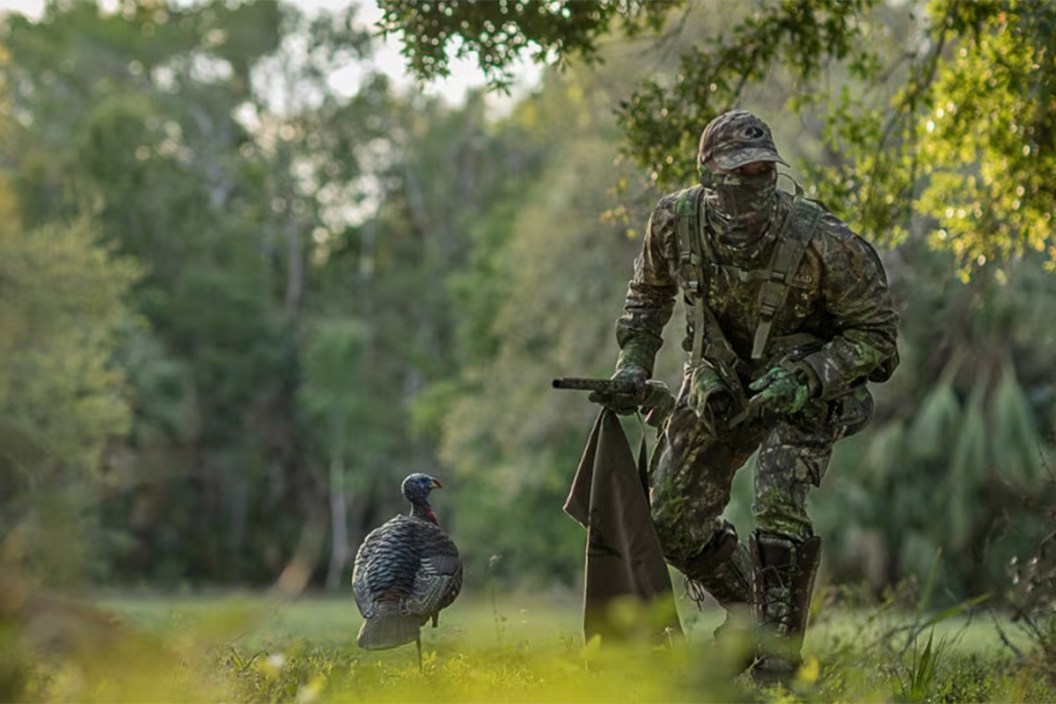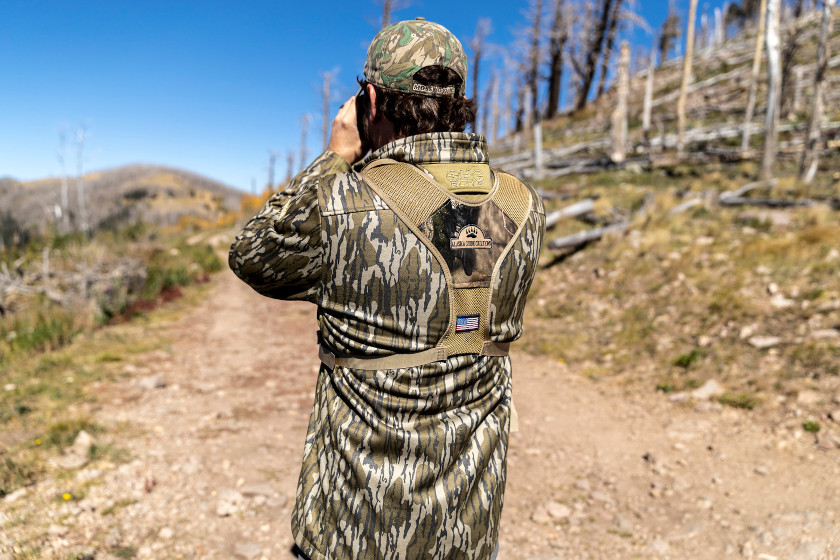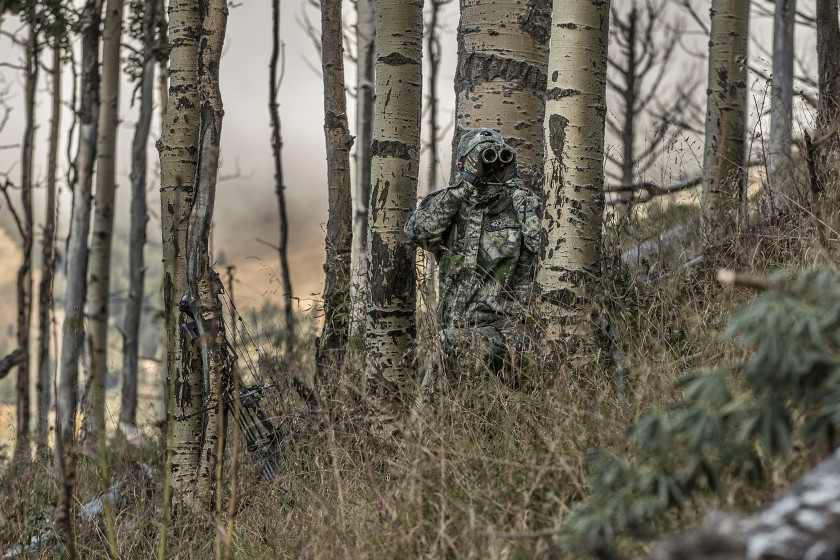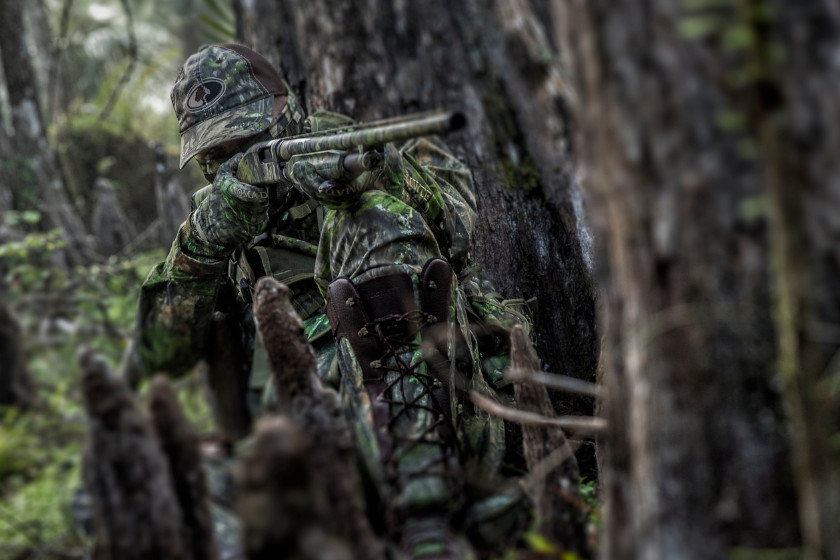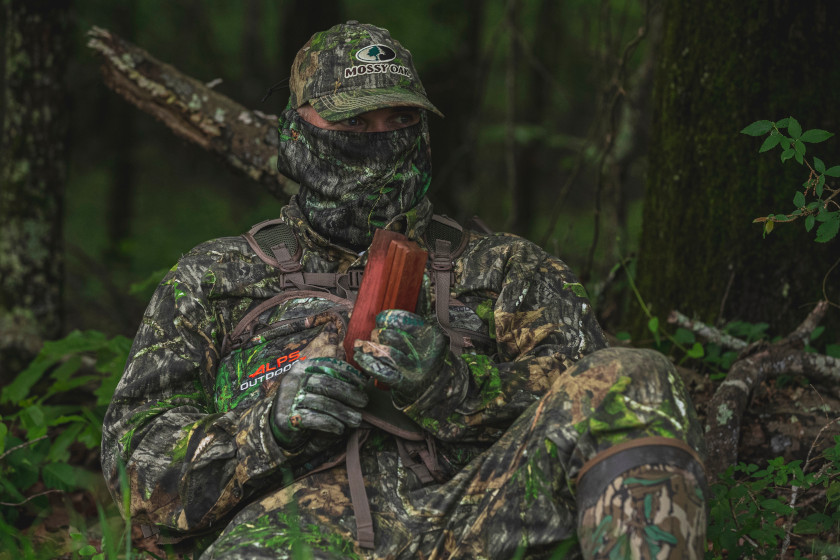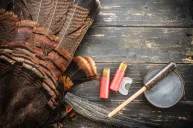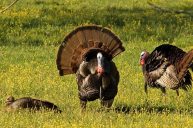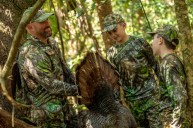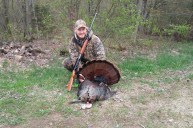For years, methods of turkey hunting traditionally consisted of finding an ideal setup with heavy cover that was near a common turkey roost. Hunters would place their decoys roughly 20-30 yards out, and periodically imitate the call of a hen searching for a Tom that is ready to breed. Although going against the natural order of turkey breeding, the deceived Toms would work their way into the decoys, presenting the perfect opportunity for the sedentary hunter to make his shot and claim his harvest.
Fast-forward to today and turkey hunters have developed new and effective ways of harvesting spring thunder chickens. While sitting still and waiting for a fooled Tom to make a mistake is very exciting and can be rewarding, taking a more aggressive and mobile route has become popular in recent years. This tactic is called "the run-and-gun."
Even today, I typically start off my turkey hunters by setting up and waiting for longbeards to work my decoys. However, if the calling becomes stale, or I feel that the Toms are starting to "hen up," I quickly switch tactics and start running and gunning. While this is an extremely effective method, there are right and wrong ways of executing it.
Here are some tips on how to perfect the run-and-gun that should help your chances of bagging that gobbler this spring!
Scout
Just because you're going to be actively moving and calling in hopes of locating that love-crazy longbeard, doesn't mean you shouldn't scout. In fact, I would say that scouting is even more crucial for this method. When you have a general idea of where the birds are heading each day, you'll make this strategy that much easier to be successful.
A couple weeks prior to the turkey opener, I like to periodically visit the farms that I will be hunting, and just throw out a few locator calls. These can range from loud yelps on my box calls, a gobble imitation, or even an owl hooter or crow "caw." The goal is to locate a shock gobble, and determine where the activity is.
Move with Stealth
Just because you don't see any turkeys, doesn't mean they aren't there. And believe me, they will often spot you before you spot them, so move with great stealth and with strategy. Staying on the move is a great way to locate birds, but it can have the opposite effect if not executed with caution. So keep that in mind when stomping through the woods searching for longbeards.
Stop and Listen
The goal is to locate a lonely and seeking Tom by the sound of his telling gobble. To achieve that goal, you'll need to stop periodically and listen carefully for even the faintest of gobbles. Depending on the size of the property I am hunting, I might stop every 100-200 yards, throw a few raspy yelps out, and listen. Be careful not to overcall, as this takes away some of the realism that you're trying to convey and can shut up a bird really quickly.
How often you call and how much ground you cover in between calls will depend entirely on the acreage of property you are hunting, and how the terrain is set up. If you're hunting mostly thick timber, you can be a bit more aggressive with this strategy. If you're hunting mostly fields, less is typically more.
Lean on the Mouth Call
Box and slate calls are great for creating loud and raspy yelps that gain the attention of any close Toms, but they require a considerable amount of movement that will be counterproductive when a Tom is coming in close. When running and gunning, you could have a longbeard on top of you at any moment, and using a box or slate call might possibly be too risky.
When I know a Tom is close by and responding well to my calling, I tend to put the box and slate call away and rely solely on my diaphragm call. This way I can make subtle but tempting purrs and clucks whilst still having my gun in position to take the shot when it presents itself. Becoming proficient with a mouth call will drastically increase your success as a turkey hunter, so start practicing!
Always Be Ready
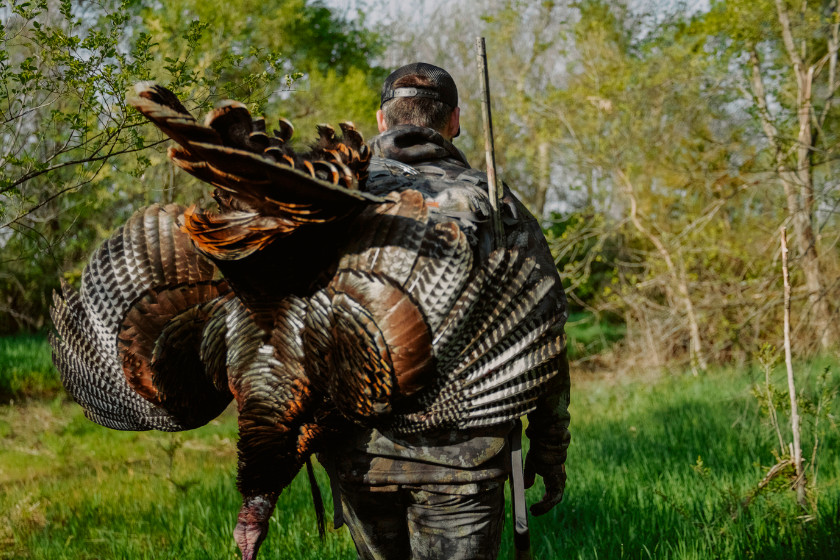
SITKA
The one thing that has always amazed me about turkey hunting is just when you think the hunt is over and you're ready to pack it up, the woods will rumble with the sound of a thunderous gobble less than 100 yards away. You didn't even know that Tom was there, and whatever the reason might be, now he is interested.
Even though the run-and-gun method is very mobile oriented, it's crucial that you stay ready and at any moment be prepared to take cover and be set up for a shot. Love-crazy Toms can oftentimes come in fast and as soon as something seems off, they will bolt in a second. Stay alert and ready.
Final Thoughts
Methods of turkey hunting have adapted greatly in recent years, and while some purists tend to knock down the idea of running and gunning, I think the new styles make this lifestyle and outdoor activity more interesting, as well as increase your success.
While this method is extremely effective, it needs to be done carefully and with a strong strategy in place. Turkeys are survival experts with incredible vision and will bolt at any sign of danger. Use these tips and methods as a baseline and don't be afraid to get mobile when hunting this spring. Good luck!
